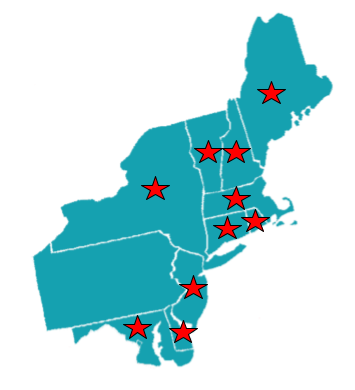What is the Northeast States Collaborative on Interregional Transmission?

On July 9, 2024 the Executive Office of Energy and Environmental Affairs announced that ten northeast states would work together in pursuing electric transmission in what will be known as the “Northeast States Collaborative on Interregional Transmission”. The ten states include: Massachusetts, Maine, Connecticut, Vermont, Rhode Island, New Hampshire, Delaware, Maryland, New Jersey, and New York.
The intended goal of this collaborative is to enhance transmissions between regions which will in turn reduce energy costs and increase reliability during peak demand and extreme weather events. Another aspect of the collaborative is to “assess offshore wind infrastructure needs and solutions.” States would share with one another their technological standards for offshore wind transmission and identify potential barriers for the development of this clean energy.
Although this collaboration is in its beginning stages, the states have already announced their first collective project, “Clean Resilience Link Project”, which will be outlined below.
Clean Resilience Link:
- Project is being funded through the Department of Energy’s Grid Innovation Program (GIP)
- GIP is a $10.5 billion program through DOE whose goal is to support projects that improve grid reliability and resilience using advanced technologies and innovative partnerships and approaches
- Supported by National Grid & Reactive Technologies
- Can receive $1 billion in funding from DOE’s GIP
- Goal is to enhance transfer capability1 of the New York – New England interface by supplementing planned asset condition work in New England
- The existing line is currently 230kV and would be upgraded to 345kV with total interregional transfer capacity increasing to 1GW
- These proposed upgrades are said to make the system more efficient, reduce congestion, lower renewable curtailment2, and lead to monetary and emissions benefits
- Facilitated by Abraham Silverman, Director of the Non-Technical Barriers to the Clean Energy Transition at the Center on Global Energy Policy at Columbia
- States will agree to sharing technical data, guidance, regulatory updates, strategic plans, project status, research results and more
- All states are responsible for their own costs
Next Steps:
As more information is released we will continue to update this factsheet. Please also see attached references below for future announcements to this collaborative.
In the media:
- Energy + Environmental Economics, “E3 Supports National Grid in Interregional Transmission Project Funding Application”
- Acadia Center, “Acadia Center Signs On to Letters in Support for the Clean Resilience Link Application by New York and New England and Support for the Six New England States’ Application for Power Up New England Funding”
- Utility Dive, “10 Northeastern states agree to collaborate on interregional transmission development”
- Energy.gov, “Biden-Harris Administration Invests $2.2 Billion in the Nation’s Grid to Protect Against Extreme Weather, Lower Costs, and Prepare For Growing Demand”
1 Transfer capability refers to the measure of the ability of interconnected electric systems to reliably move or transfer power from one area to another over all transmission lines (or paths) between those areas under specified system conditions
2 Curtailment refers to deliberate reduction in output below what could have been produced in order to balance energy supply and demand or due to transmission constraints
Links to Resources: